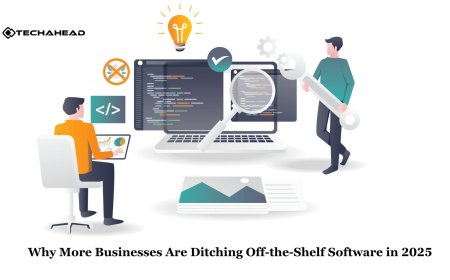Security in Enterprise Mobile App Development
Explore 7 key pillars of secure Mobile App Development for enterprises. Learn how to reduce risks, cut costs, and meet compliance with real-world strategies.

Security Essentials in Enterprise Mobile App Development: A Comprehensive Framework for Modern Organizations
Enterprise mobile apps aren't just another digital channel. They are the nerve center of modern businesses, connecting frontline employees, partners, and even customers directly to core systems. But with that convenience comes risk. As mobile adoption soars, so do the threats. Security can't be a feature bolted on laterit has to be baked into every stage of the mobile app development lifecycle.
In this blog, we break down the seven essential security pillars that every enterprise must master to protect its mobile ecosystem, reduce breach risk, and meet evolving regulatory demandsall while ensuring a top-tier user experience.
1. Understanding the New Security Landscape
The Expanding Attack Surface
Mobile environments have grown exponentially complex. Enterprises today deal with:
-
BYOD (Bring Your Own Device) policies
-
Integration with 14.7 external APIs and 9.3 third-party services per app
-
A shift from perimeter-based security to endpoint-centric control
The result? Attack vectors have grown by 53% since 2020. Notably, 78% of mobile breaches stem from compromised application logic, rather than network flaws.
Regulatory Pressures Are Mounting
Enterprises can no longer treat mobile as an extension of the web. Regulations like:
-
GDPR Article 35 (impact assessments for location-tracking apps)
-
CCPA-2024 (real-time consent revocation)
...now impose 28% stricter security requirements on mobile apps. From biometric data handling to offline storage encryption, compliance is no longer optionalit's integral.
2. Foundation: Zero-Trust Security Architecture
The perimeter is dead. A mobile-first enterprise needs Zero Trust, where access is never assumed, always verified.
Key Implementation Components:
-
11-point validation (user + device context)
-
TEE (Trusted Execution Environment) checks for device integrity
-
Behavioral biometrics with <2% false acceptance
-
Dynamic risk scoring based on environment and device behavior
"Zero-trust isn't just a security model. It's an operational mindset that aligns IT and security goals across the mobile landscape." CIO, Global Financial Services Firm
Real-World Impact:
Companies that deployed Zero Trust on mobile platforms:
-
Prevented 94% of credential stuffing attacks
-
Reduced session hijacking by 83%
3. Cryptographic Strategies That Work
Strong encryption is more than toggling TLS on. Enterprises must layer modern cryptographic tools to safeguard both data at rest and in motion.
The Three-Layer Crypto Stack:
-
Post-Quantum Readiness: Use algorithms like CRYSTALS-Kyber
-
Hardware-Backed Keys: Leverage Secure Enclave or Android Keystore
-
Ephemeral Keys: Rotate session keys every 90 seconds
Financial institutions applying these principles cut man-in-the-middle attacks from 34% to 0.7% in 18 months.
4. Secure Development Lifecycle: From Dev to Deployment
Security doesn't start after an app is built. It begins at line 1 of the code.
Threat Modeling Must-Haves:
-
Asset Criticality Mapping (per NIST SP 800-30)
-
Attack Tree Analysis targeting OWASP Mobile Top 10
-
Automated Threat Simulations (1200+ vectors tested per component)
Teams that model threats during development discover 73% more vulnerabilities than those who wait until release.
Static Code Analysis Redefined:
Modern tools now offer:
-
ML-powered false positive filtering
-
Real-time compliance mapping to 47 regulatory standards
-
CI/CD pipeline integration to reject builds with critical vulnerabilities
This shift reduces remediation costs by up to 92%.
5. Runtime Protection: Defending While Live
Even the most secure code can be targeted at runtime. Enter mobile EDR (Endpoint Detection & Response).
Behavioral Anomaly Detection:
New-gen systems monitor:
-
Memory patterns
-
System call chains
-
Energy & sensor usage
Ensemble ML models now detect zero-day malware with 99.4% accuracy and average response times of just 1.7 seconds.
Secure Communication Matters:
-
Enforce TLS 1.3 with strict cipher suites
-
Use Certificate Pinning + automated rotation
-
Implement Encrypted DNS-over-HTTPS
These strategies mitigate 98% of SSL stripping attempts.
6. BYOD and Third-Party Risk Management
BYOD: Friend or Foe?
It depends on the strategy. Successful organizations implement:
-
Containerization with hardware-enforced separation
-
Mobile Device Management (MDM) with 23 compliance checks
-
Automated jailbreak/root detection (within 50ms)
-
Secure hypervisors for workspace isolation
Healthcare firms that applied this saw an 82% drop in PHI leaks without compromising employee efficiency.
Third-Party Risk Is Your Risk
Mobile apps often include:
-
Open-source components
-
Vendor SDKs
-
Shared libraries
Modern risk reduction includes:
-
Software Bill of Materials (SBOM) validation
-
Binary composition analysis against 78 known vulnerability DBs
-
Runtime monitoring of library behavior
-
SLAs for patch delivery within 72 hours
Companies using this approach cut supply chain attacks by 94% and reduced patch timelines from 127 days to just 9 days.
7. Organizational Security Enablement
Developer Training Is Non-Negotiable
Enterprises investing 20+ hours/year per developer in:
-
OWASP mobile vulnerability labs
-
Real-world simulation environments
-
Gamified compliance score tracking
...experience 68% fewer security bugs and 53% faster fixes.
Posture Management at Scale
Top-tier enterprise platforms now offer:
-
Unified risk scoring for millions of devices
-
Automated policy enforcement
-
Threat intel from 94+ global feeds
-
Predictive analytics to prioritize vulnerability response
These tools reduce MTTD (mean time to detect) from 78 days to just over 2 hours, even across massive mobile fleets.
Conclusion: Security Is Not an Add-OnIt's the Backbone
Modern mobile app development for enterprises is no longer about building features fast. It's about building securely, strategically, and sustainably. The seven pillars outlined here form a practical framework that:
-
Reduces breach risks by 68%
-
Improves audit success by 45%
-
Cuts incident response costs by $2.4M annually
-
Maintains 99.98% app availability during active attacks
"You can't separate app experience from app security. The moment your mobile platform is compromised, trust is lostand so is the user base." CTO, Global Retail Brand
At Softura, we build mobile solutions that embrace this integrated security mindset. If you're ready to move beyond checkbox compliance and create a truly resilient mobile app development ecosystem for your enterprise, we're here to help.
Lets secure your future, one app at a time.







































